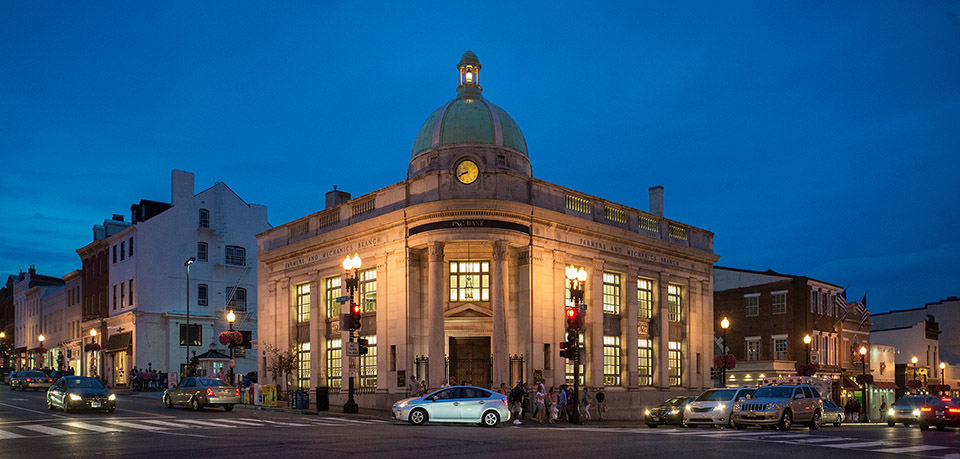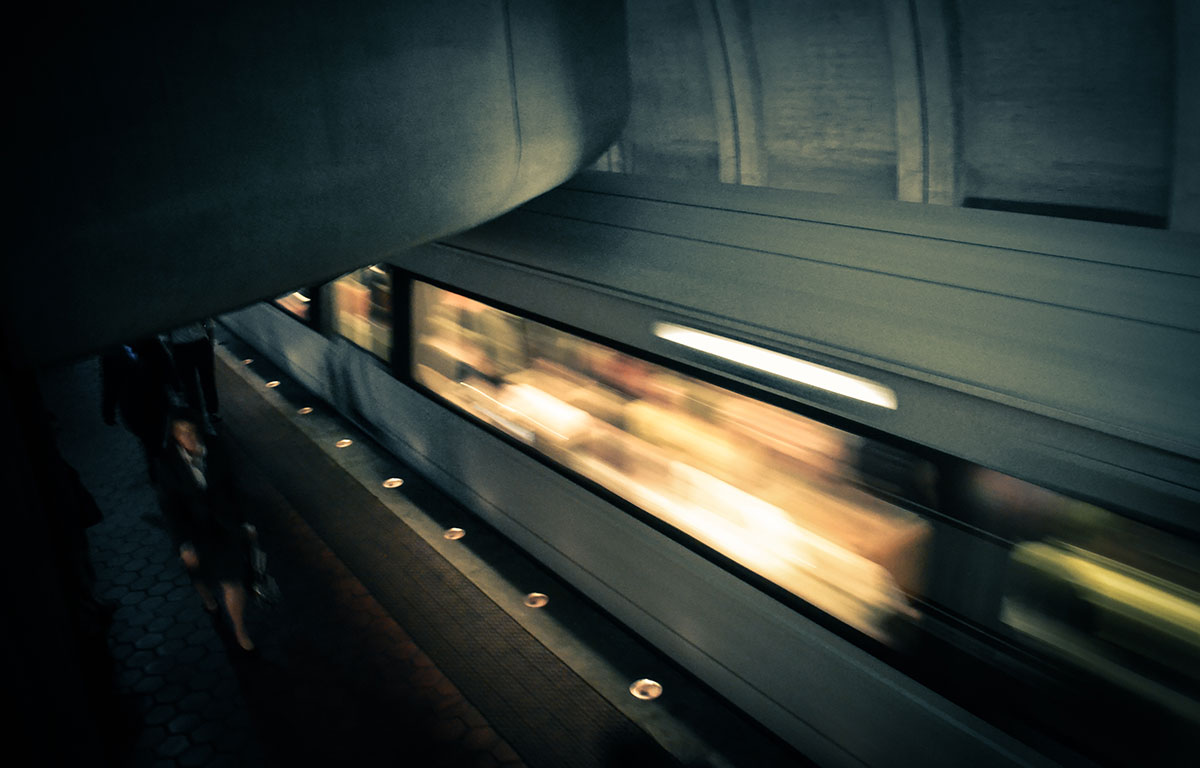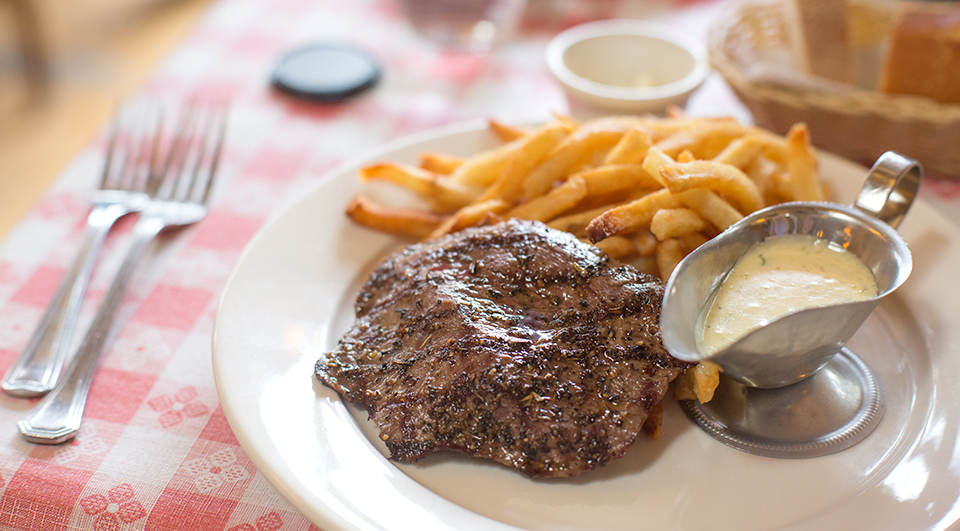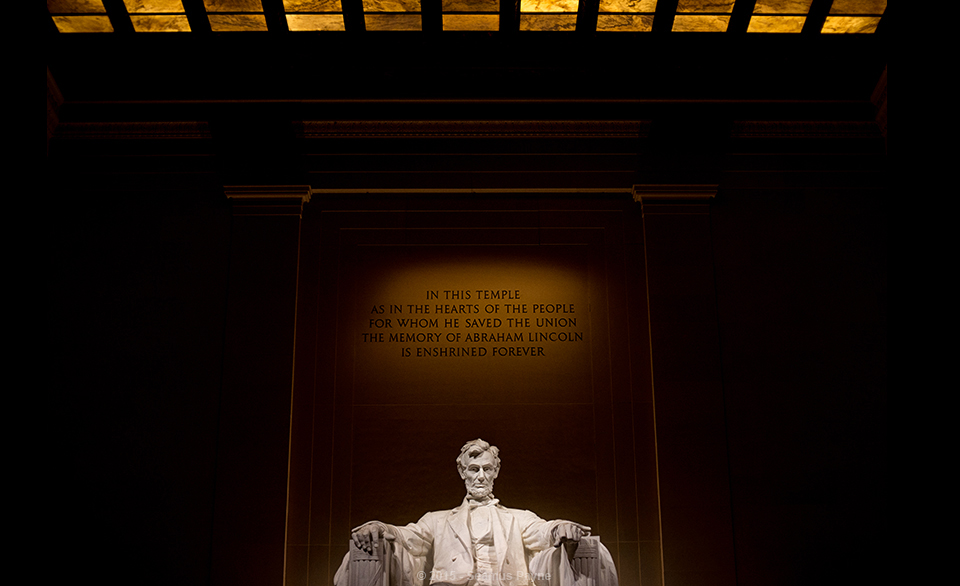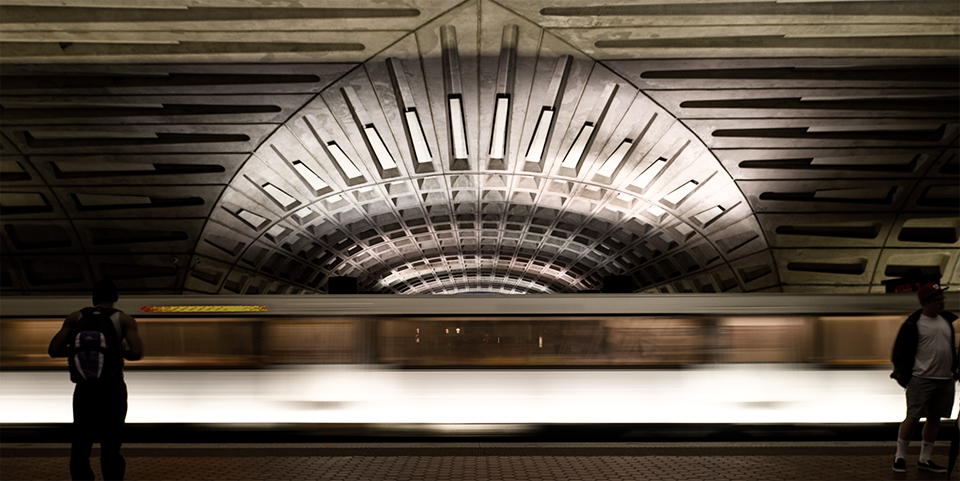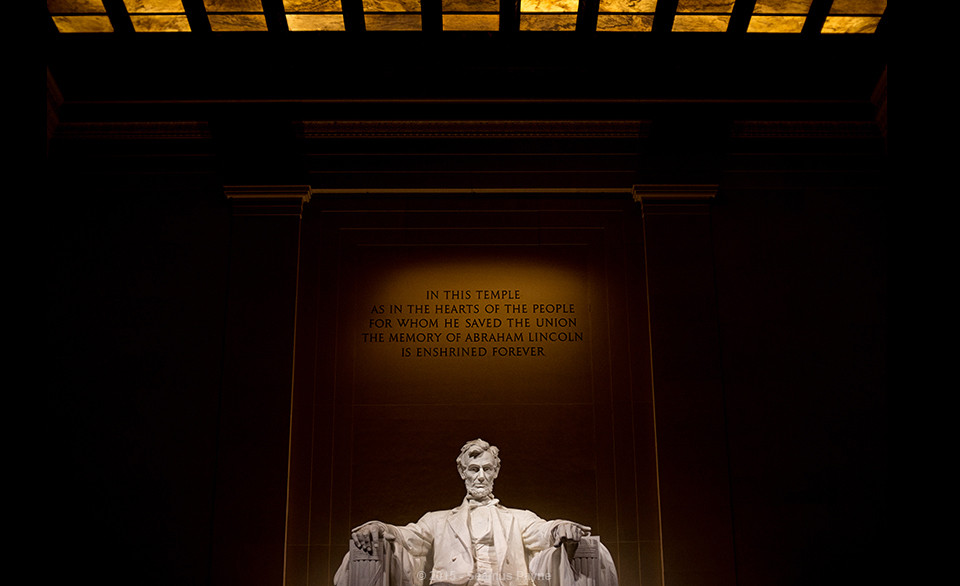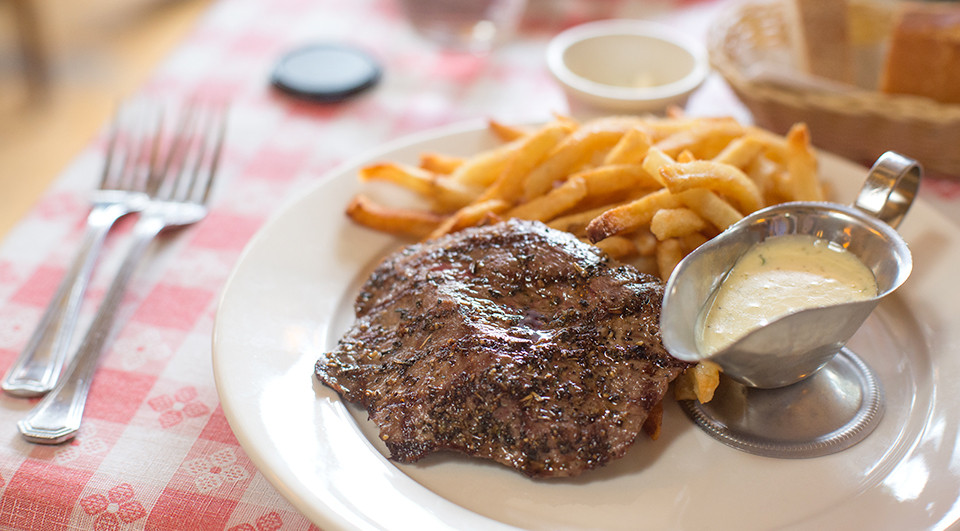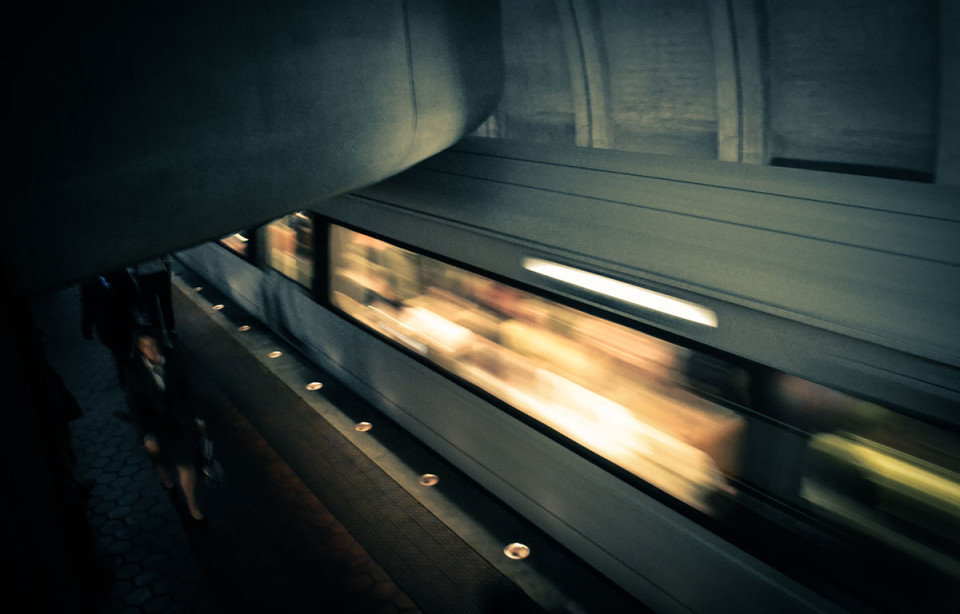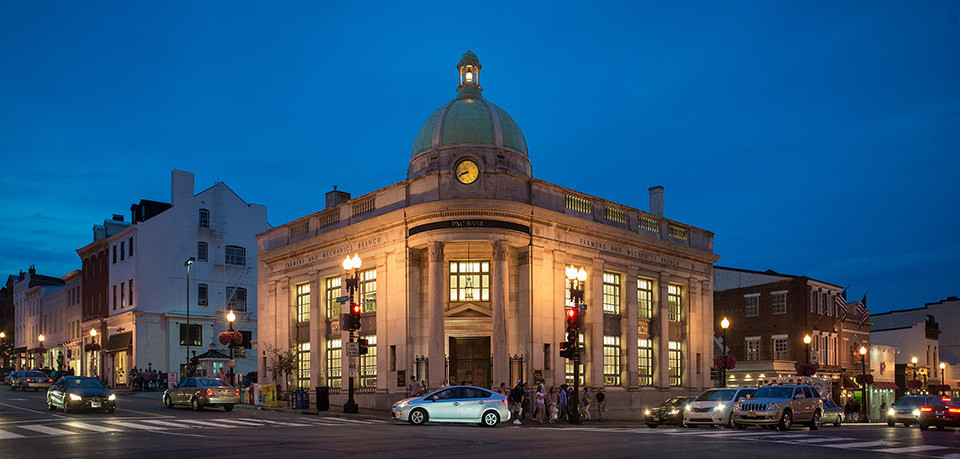[All Photos and Video by Seamus Payne for TheCoolist.com. Follow Seamus on Instagram.] RELATED STORY: A Firsthand Look at Washington D.C.’s Hot Hotel, Neighborhood and Restaurant Options for 2015 Travel
1. The Surreal, Hypnotic “Light Tunnel” of the National Gallery of Art
The amazing light tunnel of the National Gallery of Art is one of D.C.’s best-kept secrets. It occupies a pedestrian tunnel beneath two wings of the gallery, a section of the building that most visitors might miss. This tunnel hosts the lighting artist Leo Villareal‘s “Multiverse”, a constellation of 40,000+ LED bulbs. These bulbs are controlled by a software system that allows them to shift, twinkle, swirl and dance as guests view the show from below. On my last visit to Washington D.C., seeing the light tunnel was a top priority. I brought my camera and spent a few hours on site producing the above video.
2. The Solemn Intimacy of the Lincoln Memorial at Night
Of all of the tourist hot spots in Washington, D.C., the Lincoln Memorial is one of the busiest. During the day, it can be a bit of a mess of selfie sticks, boy scout uniforms and sweat. In a crowd, it can be difficult to appreciate the sanctity of this monument. Fortunately, the memorial is open 24 hours a day, welcoming guests at all hours of the night. I visited the Lincoln Memorial at the stroke of midnight, July 4th, 2015. The crowds were mostly driven away by rain, leaving me enough room to reflect on the monument and work with my camera. As a photographer, I knew that the above photograph could only be achieved at night, when all ambient daylight was gone from the interior. This brought out the subtle architecture behind President Lincoln that frames his figure and his message. If you want to have some intimate time with Abe, or you want to capture a powerful photograph, visit the Lincoln Memorial at night.
3. Amazing International Food – and the Steak Frites of Bistrot du Coin
Washington D.C. is very much an international city. There’s a large population of foreign dignitaries and staff that come to D.C. and want a taste of home. That leads to many unique, lesser known restaurants around the city that cater to these cultures. If you do a little planning and research ahead of time, you can find some pretty special meals you’ll have a hard time finding elsewhere. My personal favorite has its share of French and Mediterranean adherents — Bistrot du Coin in Dupont Circle. In contrast to many other French restaurants in the United States, there’s nothing pretentious or progressive about this place. The decor and the menu likely haven’t changed in the last decade. It’s traditional French food the way Grand-maman makes it. My suggestion? Order Le Steak Maison. It’s your basic Steak Frites with Béarnaise, and it’s the best I’ve ever had. If you’re not feeling steak with fries and want something a bit more formal, try the Navarin d’agneau. That’s lamb stew in a light tomato garlic sauce with vegetables. You’ll be back for more.
4. The DC Metro as a Destination of its Own
I feel quite strongly that the DC Metro is the most important work of contemporary civic architecture in the United States. It is as functional as it is beautiful, a work of architecture that protects its guests while inspiring awe at the same time. It was recently awarded the 25 Year Award by the American Institute of Architects, an award given to projects that have stood the test of time. Some daily commuters may loathe the system. As visitors, we’re granted fresh eyes to experience the DC Metro as its own work of art. When you visit Washington, D.C., I encourage you to look at the Metro not as a means to an end, but an end of its own. Take time to step off the subway and to walk through its stations. Experience it slowly. Look at the work of architect Harry Weese and really take in its almost other-worldly nature. I first experienced the DC Metro at the age of 3, and it was the first time architecture really made an impression upon me. 30+ years later, and architecture is central to my livelihood. As a lifelong fan of architecture, I cannot stress how awe-inspiring and important this work of architecture is. I hope you see it as a destination of its own when you visit D.C.
5. Georgetown’s Historic Identity and Youthful Vibrance
When I travel to Washington, D.C., I stay in Georgetown. It is about as old as a community can get in the United States, but its spirit is young and progressive. There are buildings here in Georgetown that date back to the mid 1700’s, but today they’re occupied by Apple Stores, fashion brands and myriad cupcake shops. One virtue about Georgetown is that it’s slightly off the beaten path of tourism. Sure, it gets plenty of out-of-town visitors each year, but its a bit out of reach of the Metro and it’s inconveniently far away from most of the museums and monuments. So it feels a little more neighborhood-ish than downtown D.C. proper. This summer, I spent a long weekend in Georgetown at The Graham Hotel, a travel experience I shared with my friends (and for that trip, sponsors) at Booking.com. If you haven’t experienced a vacation in Georgetown, check out my full photo essay now.
